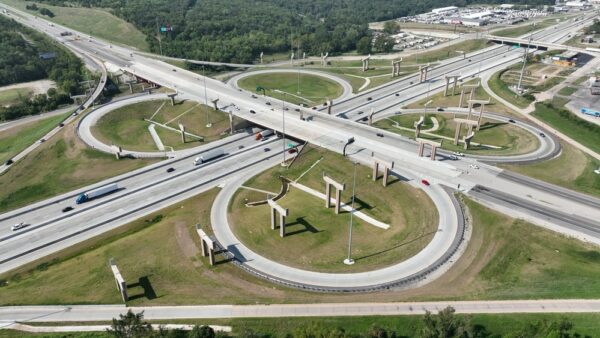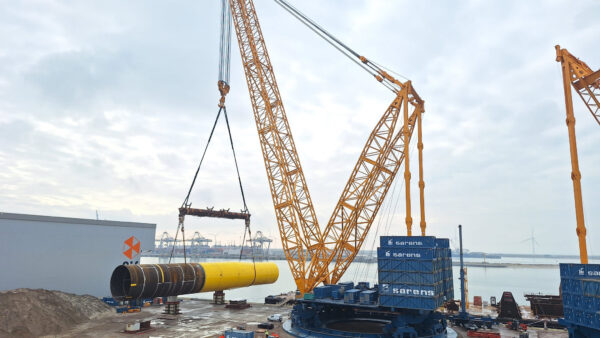A team of Italian soldiers and engineers has arrived at the site of the Mosul dam on the river Tigris to begin emergency repairs to the structure.
The soldiers arrived last Thursday, 14 April, and secured the area for the engineers, who arrived on Tuesday, 19 April, according to Iraqi news site NRT.
The urgency is due to the increasing pressure on the structure as winter snows melt in the mountains of Turkey and flow into the upstream lake. Normally this would be relieved by opening sluice gates, but these are jammed shut.
Meanwhile the physical integrity of the dam and its foundations is believed to be deteriorating.
The government of Iraq has signed a €273m ($296m) contract with Trevi Spa to reinforce and maintain the Mosul dam for 18 months. This contract was signed on 2 March after intensive negotiations, according to Italian news website Ansa. The tender was let in October last year.
Trevi Spa is the division of Trevi Group that specialises in foundations. The company said in a statement that it would drill into the gypsum beneath the dam and inject cement mixtures to consolidate its foundations. It would also repair and maintain the outlet tunnels and train Iraqi staff to operate the dam’s machinery.
The Italian team is also preparing a camp on site to house about 450 engineers and 500 military personnel, as well as Iraqi troops. The Italian security force is thought to be made up of units of the Garibaldi Brigade with armoured vehicles, as well as special forces, sappers and air support. They will protect workers from attack by Islamic State (IS) fighters, who hold the nearby city of Mosul.
On 24 March the Iraqi government and Kurdish forces launched a major offensive with American support to retake Mosul, a city of approximately 2 million people.
American and local officials have repeatedly warned that the dam is at risk of catastrophic failure, which could lead to the deaths of as many as a million people in the downstream Tigris valley.
Maintenance of the dam was suspended after IS seized it in August 2014, scattering workers and destroying equipment. It was retaken two weeks later by Iraqi government forces backed by air strikes.
Image: The dam was built by a German-Italian team and completed in 1984. It was built on a gypsum base and requires continual re-grouting to preserve stability (Trevi)
Comments
Comments are closed.











Step no. 1: Retake Mosul! Step no. 2 Open all the taps to release excess water out of the dam – but use the released water productively and do no charge the people for using the excess water! Step no. 3 : once the water level in the dam is just below the bottom of the sluice gates use the required number of hydraulic jacks and repair the suice gates lifting equipment to lift all of the sluice gates up to their maximum elevation and lock them fast in that position! Step no. 4: Fully repair and make all of the hydro-electrical station fully operational again! Step no. 5: Then comes the ultimate challenge question: How to stop the water erosion of the gypsum bedrock? My Suggestion: Line the entire water retaining side of the dam and as far possible the water bottom ahead of the dam wall with dam lining quality joint welded waterproof PVC sheeting and firmly secure the leading edges of this sheeting deep into the underwater floor of the dam to avoid seepage! Step no. 6: Drain and expose the base if the dam wall -drill down to solid bed rock -retract the drill and then pressure pump a strong rapid hardening concrete mix in to completely fill the hole! Step no.7: Continue this across the whole length of the base of the dam to form a secure barrier to any further possibility of erosion via seepage through the natural gypsum founding of the dam! Q.E.D.!!!
Jose,
Makes sense to me. I have been studying this and did not actually expect this latest news. This could be getting serious. Even Obama knows about the seriousness of this.
Regarding the Gypsum Bedrock, I would see it;
1- There should be drilled down a tunnel from both dam dry sides until we reach the leakage level. then,
2- A Horizontal (google: Crystalline Solid Molecular structure of Diamond shape) of Concrete-Mix from both sides, meet each other below the Dam, and
3- They go upwards to hold it like Pillars, were they should be designed so that tension fades away in the dry sides of the Dam.
4- inject leakages throughout the effected areas
I think this is expensive but it can be a solution.